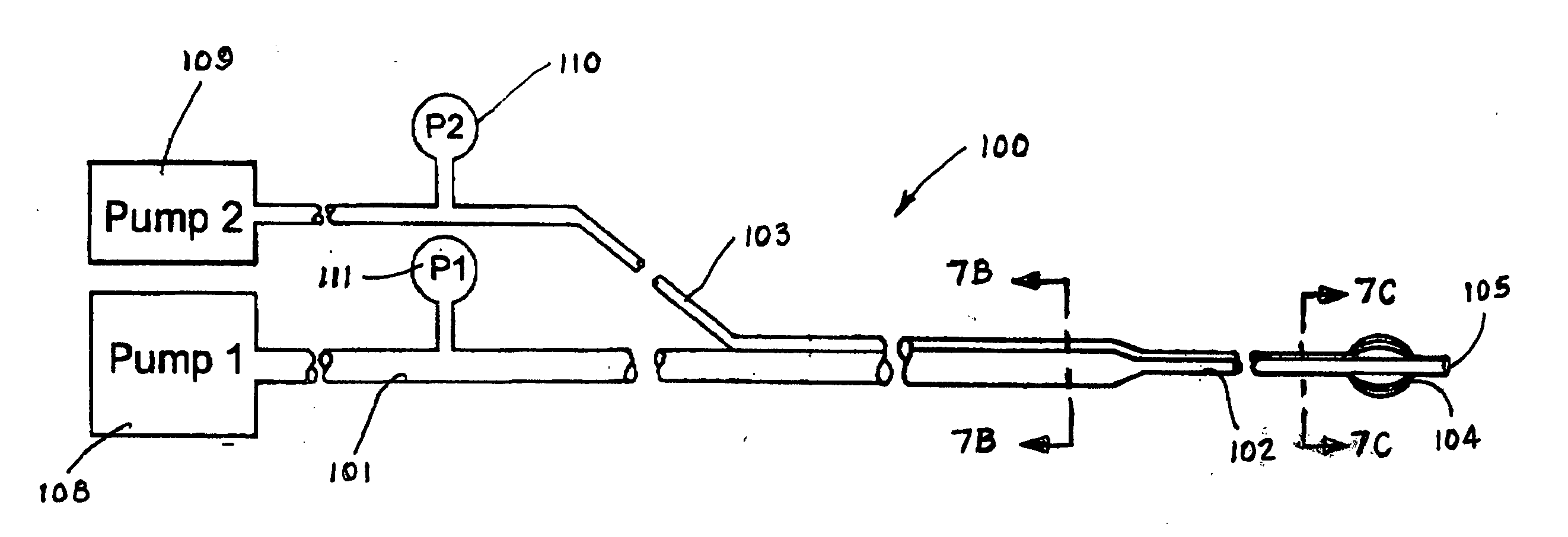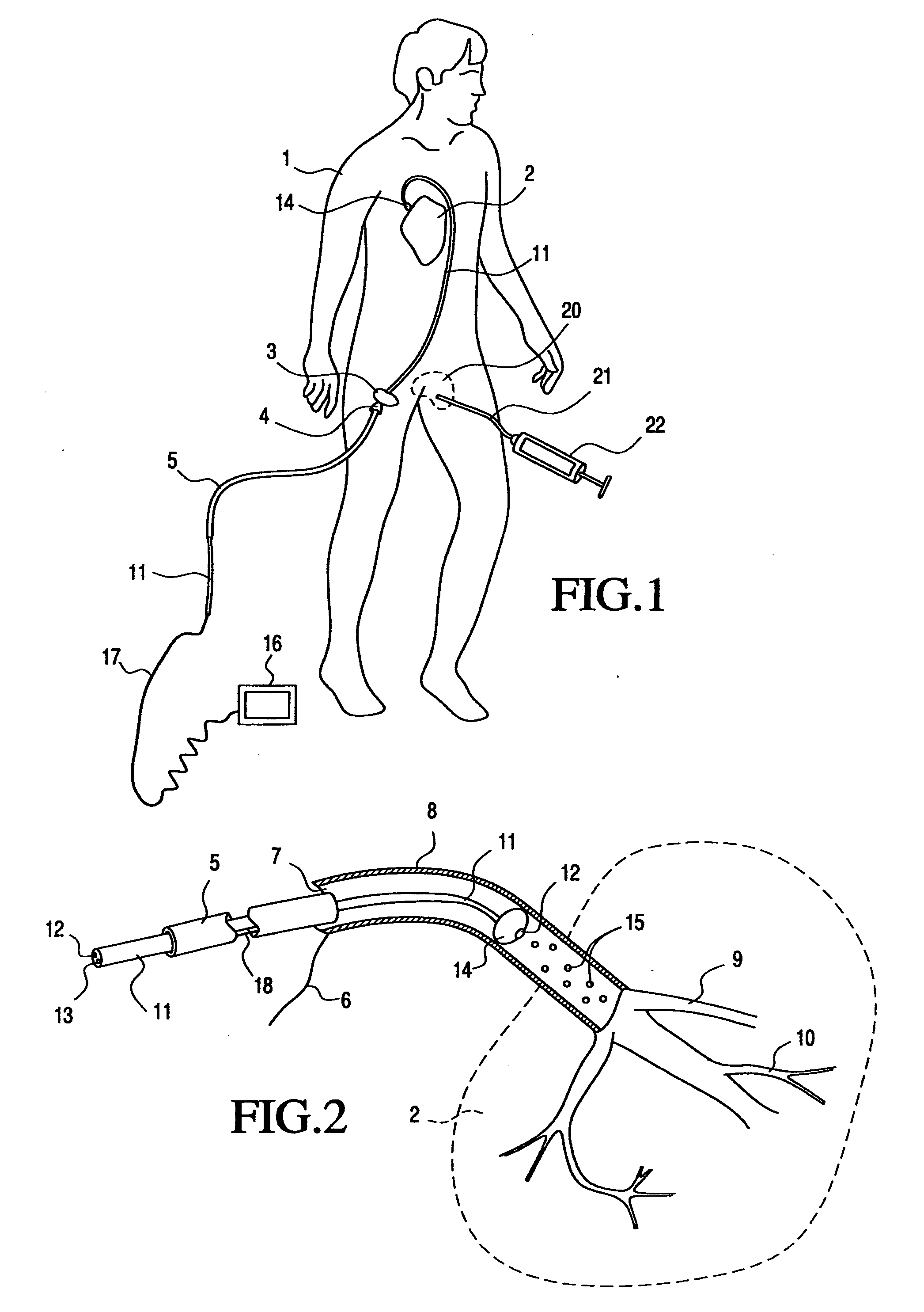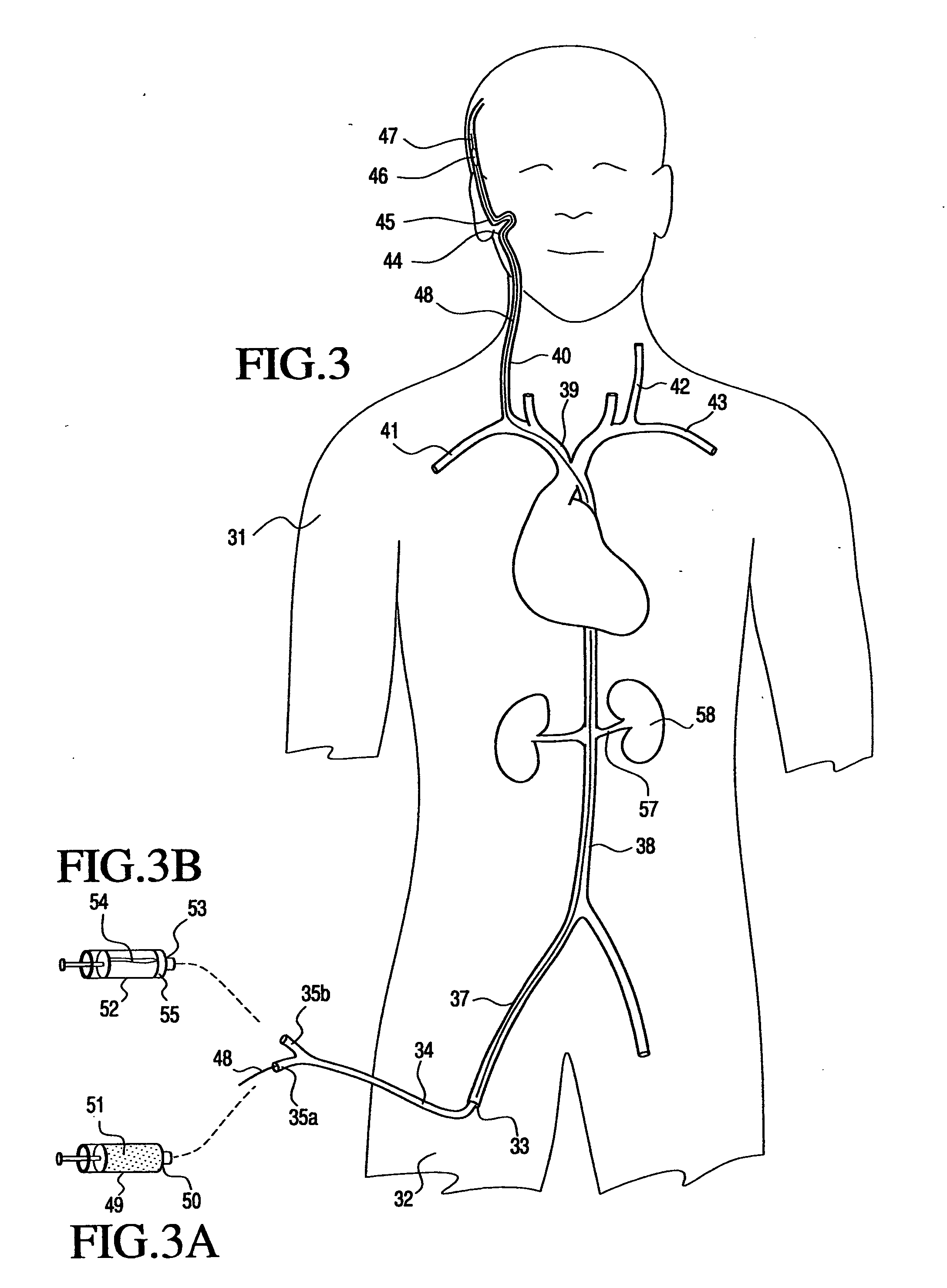Method and instrumentation for control of stem cell injection into the body
- Summary
- Abstract
- Description
- Claims
- Application Information
AI Technical Summary
Benefits of technology
Problems solved by technology
Method used
Image
Examples
Embodiment Construction
[0106] The accompanying Figures of drawing, including FIGS. 1-4 discussed in the Background section above, are not intended to be to scale, nor to do more than serve as a visual aid to the description. In those Figures representing the human body or body parts, certain components may be exaggerated relative to others for the sake of emphasis or clarity of the respective accompanying description.
[0107] The basic conditions addressed by the delivery system and method of the present invention (but using conventional apparatus to illustrate the problems sought to be overcome) are illustrated in the graph of FIG. 5, with plots of catheter tip pressures in mm Hg (millimeters of mercury) versus cumulative number of 11.5 μm (micrometer, or micron) diameter polystyrene beads, or microbeads (simulating the size of stem cells for purposes of the experiments conducted by the applicant), infused into a region of body tissue to be repaired.
[0108] In conducting the experiments that led to the re...
PUM
 Login to View More
Login to View More Abstract
Description
Claims
Application Information
 Login to View More
Login to View More - R&D
- Intellectual Property
- Life Sciences
- Materials
- Tech Scout
- Unparalleled Data Quality
- Higher Quality Content
- 60% Fewer Hallucinations
Browse by: Latest US Patents, China's latest patents, Technical Efficacy Thesaurus, Application Domain, Technology Topic, Popular Technical Reports.
© 2025 PatSnap. All rights reserved.Legal|Privacy policy|Modern Slavery Act Transparency Statement|Sitemap|About US| Contact US: help@patsnap.com



